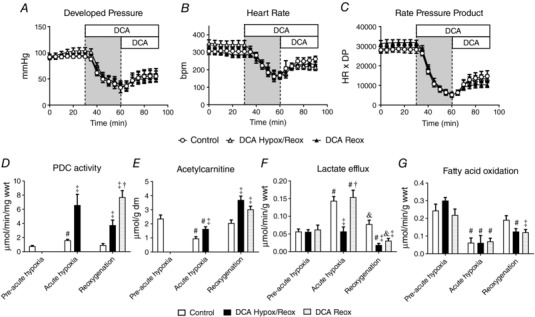Figure 1. Effect of acute hypoxia (grey bar) and dichloroacetate (DCA) infusion on cardiac function and metabolism (n = 7).

Developed pressure (A), heart rate (B), rate pressure product (C), cardiac pyruvate dehydrogenase complex (PDC) activity (D), cardiac acetylcarnitine content (E), lactate efflux (F) and fatty acid oxidation (G). Hearts were flash frozen at the end of pre‐acute hypoxia, acute hypoxia and reoxygenation for subsequent analysis of metabolites. DCA Hypox/Reox, 1 mm DCA continuously infused from the onset of hypoxia; DCA Reox, 1 mm DCA continuously infused from the onset of reoxygenation. # P < 0.05 vs. pre‐acute hypoxia in the same group; † P < 0.05 vs. DCA Hypox/Reox at a given time point; & P < 0.05 vs. acute hypoxia in the same experimental group; ‡ P < 0.05 vs. control at a given time point.
